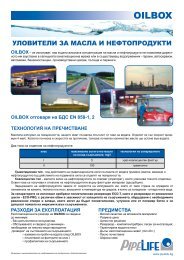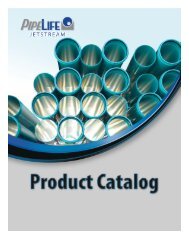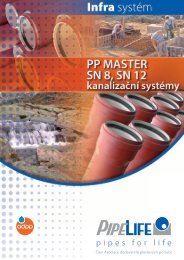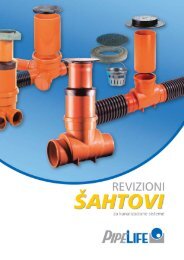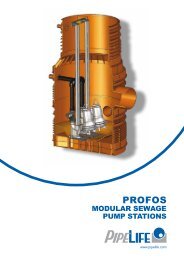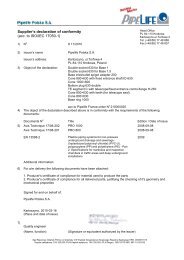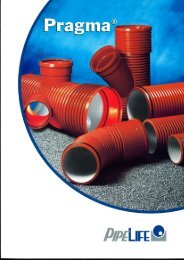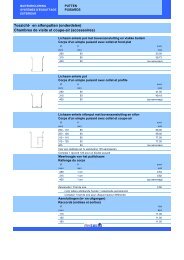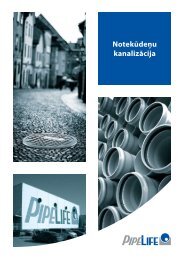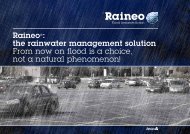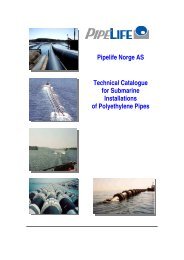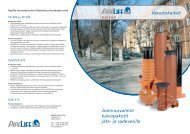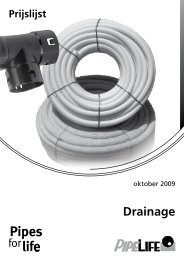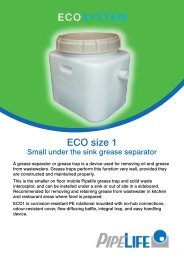Create successful ePaper yourself
Turn your PDF publications into a flip-book with our unique Google optimized e-Paper software.
POSITIVE RESULT<br />
Force F<br />
10% 20% 30% Deflection<br />
NEGATIVE RESULT<br />
Force F<br />
F max<br />
6<br />
10% 20% 30% Deflection<br />
► Creep ratio. Tested according to EN ISO 9967<br />
Creeping is a remaining deformation at the plastics as a result of the constantly applied external load. Creeping abates for a period of<br />
about two years. Creeping is crucial for the leak tightness of the socket connection.<br />
The standard requires that creep ratio for the PP and PE <strong>pipes</strong> to be < 4.<br />
Creep ratio is inversely proportional to the module of elasticity. The bigger the module of elasticity, the less is the creeping and vise<br />
versa.<br />
► Requirements for tolerances on <strong>pipes</strong>, connecting elements and systems. Tested according to EN 1852-1,<br />
PE EN12666-1<br />
The basic geometrical characteristics are included in EN 13476. The correct proportions and tolerances assure us that all elements of<br />
the system are the same, fit close to each other and allow a reliable assembly.<br />
This is crucial and important condition which concerns the connections with a elastomeric gasket. The proportions of the <strong>pipes</strong> and the<br />
fitting elements are determined according to their outer diameter DN/OD or their inner diameter DN/ID. Standard EN 13476 defines<br />
the following nominal diameters:<br />
DN/ID [mm]: 100, 125, 150, 200, 225, 250, 300, 400, 500, 600, 800, 1000, 1200<br />
DN/OD [mm]: 110, 125, 160, 200, 250, 315, 400, 500, 630, 800, 1000, 1200<br />
According to the diameter, the standard defines the wall thickness of the <strong>pipes</strong> smooth ends, the sockets and their inner layers as<br />
well as the length of any product. The tolerances mentioned in the standard describe mainly and only a limit value namely minimal<br />
and maximal.<br />
► Impact resistance. Tested according to EN 744, EN 1411, EN 12061<br />
This test checks if the <strong>pipes</strong> and the fitting elements won’t be damaged during transportation, storage and assembly.<br />
According to the standard EN 13476-part 2 and 3, there is only one requirement: TIR < 10% at temperature 0°С.<br />
The point of damage is assessed as a real impact (dynamically active) norm [TIR - true impact rate] for a shipment or production<br />
where the maximum value for TIR is 10% [TIR=the total number of damages divided by the total number of impacts, as a percentage,<br />
as if the whole shipment was tested].<br />
Pipelife<br />
www.pipelife.com



